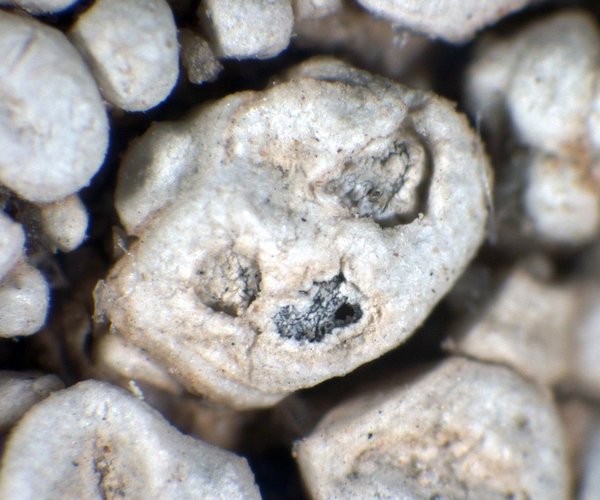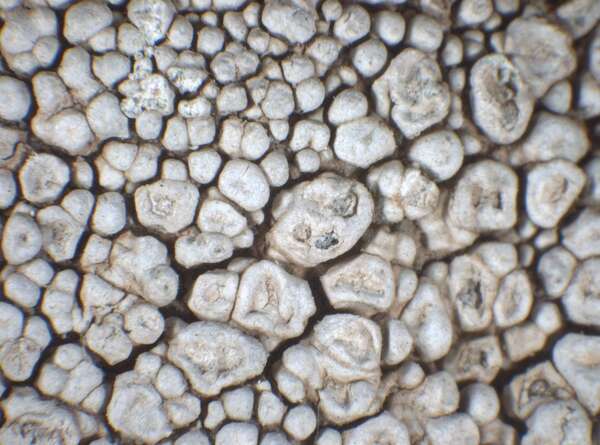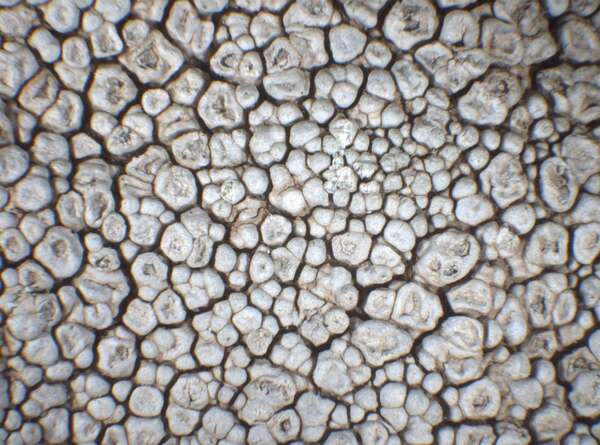Pertusaria pseudoparotica Sipman
in Sipman & Raus, Willdenowia, 32, 2: 381, 2002.
Synonyms:
Distribution:
Description: Thallus crustose, episubstratic, c. 0.5-1 mm thick, grey to white with a pale brown tinge, dull, sometimes slightly pruinose, forming over 10 cm wide patches which are marginally zoned and often delimited by a dark prothallus, areolate-papillose, the sterile areoles 0.2-0.6 mm wide, initially rather flat but soon strongly convex and raised, forming up to c. 0.5 mm wide and tall papillae. Apothecia immersed into c. 2 mm wide and 0.5-1 mm fertile areoles, 1(-5) per areole, with an expanded, 0.3-0.5 mm wide, grey but white-pruinose disc, seemingly short-lived and regenerating, causing the development of 1-3 concentric rims around the disc, sometimes leaving yellowish scars. Epithecium dark grey; hymenium colourless; paraphyses branched and anastomosing; hypothecium colourless. Asci 2-spored, broadly cylindrical, the apex with a broad ocular chamber, the outer sheath K/I+ blue, otherwise K/I-, Pertusaria-type. Ascospores 1-celled, hyaline, ellipsoid, c. 100-126 x 50 μm, smooth-walled, not thickened at the apices. Photobiont chlorococcoid. Spot tests: thallus K+ yellowish turning brown or K-, C-, KC- or KC+ pink, P+ orange-red. Chemistry: protocetraric acid (major), sometimes with traces of gyrophoric acid, atranorin or other, unidentified substances.Note: a silicicolous species characterized by 2-spored asci and the presence of protocetraric acid as the major secondary compound. Hitherto known only from Greece, it should be looked for also in Mediterranean Italy.
Growth form: Crustose
Substrata: rocks
Photobiont: green algae other than Trentepohlia
Reproductive strategy: mainly sexual

Predictive model
Growth form: Crustose
Substrata: rocks
Photobiont: green algae other than Trentepohlia
Reproductive strategy: mainly sexual

Predictive model





